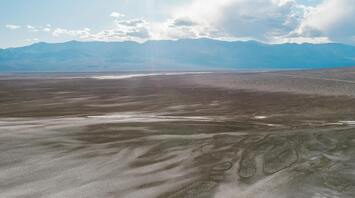An atmospheric river may flood the driest place in America

The atmospheric river arrived and wreaked havoc with heavy rain, snow and wind. The storm followed a similar system that brought rain to the state. This led to a saturation of land that was prone to flooding with the second system.
Catastrophic flooding occurred, in particular, in Los Angeles County. The National Weather Service (NWS) has issued a flood watch for Death Valley National Park as the storm moves east. The park is the hottest place on Earth. This was reported by newsweek.com.
According to the National Oceanic and Atmospheric Administration, atmospheric rivers are defined as "a long, narrow region in the atmosphere, like rivers in the sky, that carry most of the water vapor outside the tropics."
0.73 inches of rain fell in Furnace Creek, Death Valley, California, which is 190 feet below sea level. NWS meteorologist Clay Morgan called the total rainfall "impressive" and said that up to 0.1-0.2 inches of rain is still expected in the desert.
If enough rain falls in Death Valley National Park, a temporary lake may form. A similar lake was formed after Hurricane Hilary, which brought heavy rain to California last August.
According to the National Park Service's website, roadwork and repairs are ongoing after Hilary hit. Morgan said he expects the standing water from the atmospheric river to end up back in the salt flats of Death Valley.
The total rainfall in the lower part of Death Valley is significantly different from the rainfall in the mountains. Death Valley is a mountainous region, with some of its peaks stretching to over 11,000 feet in elevation. In addition to flooding at lower elevations, the atmospheric river threatens heavy snow for regions above 6,000 feet, including some peaks in Death Valley National Park.
"A winter storm warning for snow means that severe winter weather conditions will make travel very dangerous or impossible. If you need to travel, keep an extra flashlight, food, and water in your car in case of an emergency," the NWS warning says.



















